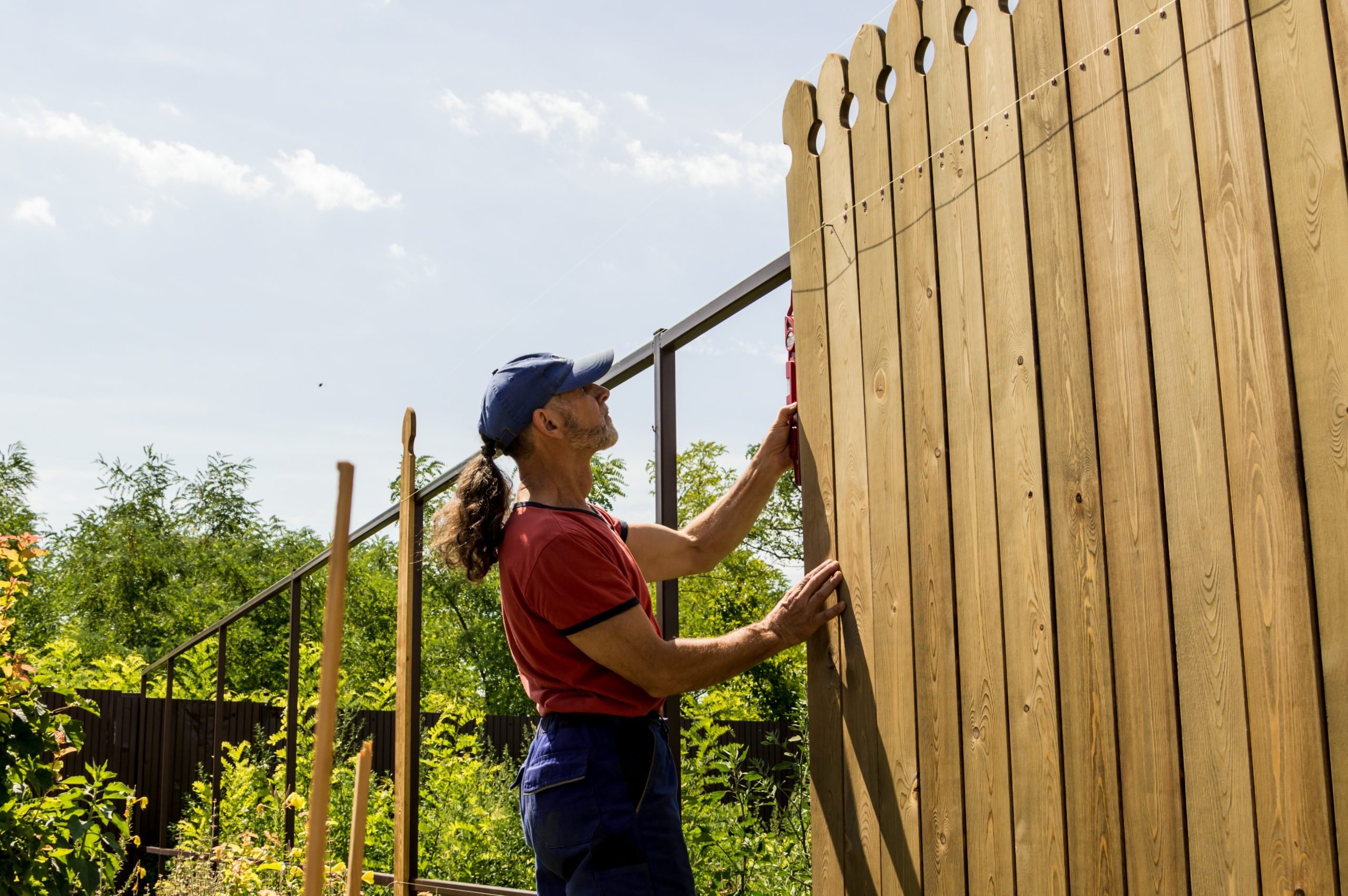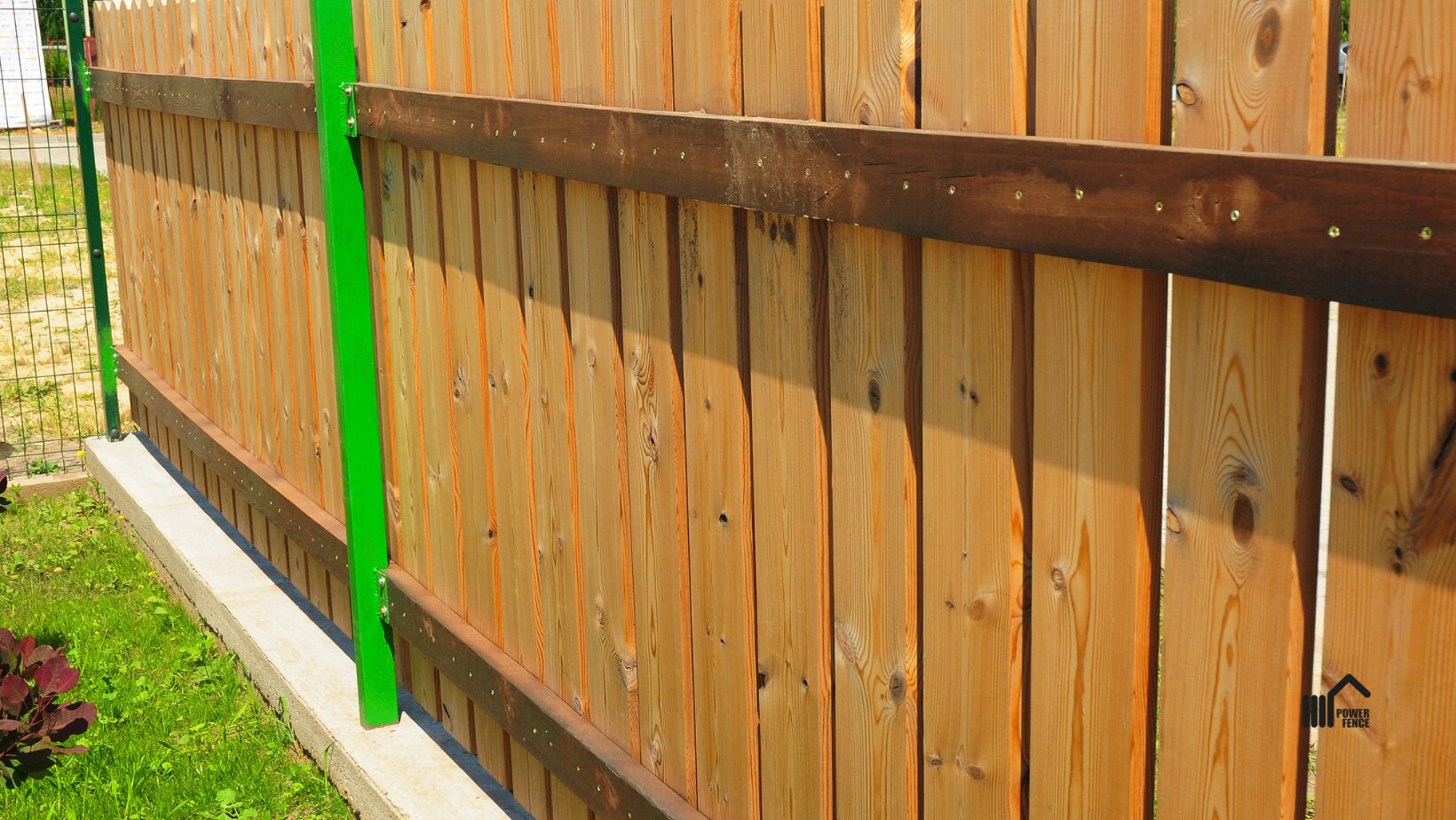Just How to Determine Usual Problems That Require Immediate Fencing Repair
It is critical to detect concerns before they end up being bigger issues when it comes to preserving your fencing. Frequently looking for indicators of decomposing timber, leaning panels, or corrosion can conserve you time and cash in the future. You could not understand just how weather and bugs can compromise your fencing's honesty. Let's check out the usual signs that suggest your fence needs instant focus, so you can maintain your residential or commercial property safe and secure and looking its best.
Signs of Rotting Timber in Wooden Fences
Have you noticed your wooden fencing looking a bit even worse for wear? If so, it could be time to check for indications of rotting timber. Examine the base of the posts and panels for soft spots. If you press on the timber and it really feels squishy or crumbles, that's a clear sign of rot. Next off, try to find staining or dark places on the timber-- these often signal wetness damages. Focus on any type of peeling paint or finish, as this can expose the wood to more degeneration. Additionally, a pungent, moldy smell can show fungal growth. Don't neglect to evaluate joints and links; if they're loose or breaking down, the timber beneath is most likely jeopardized. By capturing these indications early, you can protect against extra comprehensive damages and maintain your fencing standing strong. Routine maintenance is key to expanding the life of your wooden fence.
Leaning or Tilting Fence Panels
It's important to comprehend what caused it if you have actually observed your fence panels turning or leaning. This problem might indicate underlying architectural damage that requires your interest. Let's discover the typical reasons and the fixing alternatives offered to obtain your fence back in shape.

Reasons For Leaning Panels
It's often an indicator of underlying concerns that need resolving when you discover your fencing panels leaning or tilting. One usual cause is poor water drainage; extreme water can wear down the soil around the fencing messages, compromising their assistance. Another perpetrator could be solid winds or storms that push against the panels, especially if they're not appropriately anchored. Furthermore, the natural settling of soil gradually can trigger articles to shift, resulting in a tilt. Parasites, like termites, can jeopardize the honesty of wooden panels, creating them to lean. Finally, inadequate installation practices may result in panels not being safely established, leaving them vulnerable to leaning under pressure. Address these issues immediately to keep your fencing's integrity.
Indications of Structural Damages
Seeing turning or leaning fencing panels can be startling, as these issues commonly show architectural damages that requires instant interest. When your fence starts to lean, it may signal that the messages are shifting or that the soil around them has eroded. Pay attention to gaps between posts or panels, as these can also recommend instability. deck builder. Additionally, look for splits or splintering in the timber, which can compromise the general structure. If you discover rust or rust on steel elements, it could compromise the honesty of the fencing. Remember, disregarding these indications can result in a lot more severe damages down the line, so it's necessary to analyze the situation promptly and act prior to it worsens
Repair Work Options Available

Corrosion and Corrosion in Steel Fences
If you have a steel fence, you could notice corrosion and corrosion sneaking in over time, particularly if it's subjected to dampness. These issues not just affect the appearance of your fencing however can additionally jeopardize its architectural honesty. To determine corrosion, search for reddish-brown spots or patches, which indicate the metal is oxidizing. Deterioration can spread out quickly if left untreated, leading and damaging the fencing to expensive repairs.To deal with rust and deterioration, you should cleanse the impacted locations with Your Domain Name a cord brush and apply a rust-inhibiting primer. Once the primer dries, take into consideration repainting the fencing with a weather-resistant paint to protect it even more. Regular maintenance, such as checking for indicators of rust and touching up paint as needed, will certainly assist extend your fence's life-span. Dealing with these problems immediately ensures your steel fencing continues to be solid and aesthetically appealing for many years to come.
Cracks and Divides in Vinyl Fence

Sources Of Vinyl Damage
Plastic fence is prominent for its toughness, yet it can still deal with cracks and divides as a result of various elements. One significant cause is extreme temperature variations. It can damage the product over time when vinyl broadens in the warmth and agreements in the cool. In addition, exposure to harsh sunlight can cause UV destruction, making the plastic brittle. Physical effects, like unexpected crashes or hefty branches, can also develop fractures. Poor installation or making use of low-grade products can worsen these concerns. Furthermore, age contributes; older vinyl fence is a lot more susceptible to damages. Routine examinations can assist you determine these elements before they bring about considerable problems. Take positive actions to guarantee your fence stays solid and intact.
Fixing Cracks Efficiently
Although fractures and divides in your vinyl secure fencing can be worrying, addressing them quickly can prevent more damage and preserve the fence's look. Initially, assess the dimension of the crack. For tiny cracks, a plastic repair work package commonly includes sticky that can bond the sides, offering a smooth solution. Clean the area extensively before applying the sticky, guaranteeing it sticks properly. For bigger splits, you might require to use a plastic spot. Cut the patch to dimension, apply adhesive around the sides, and press it strongly onto the split. Enable it to heal as per the maker's guidelines. Normal upkeep and fast repairs can extend your fence's lifespan, maintaining it looking fantastic for many years ahead.
Loose or Missing Out On Fencing Posts
Missing or loosened fence posts can weaken the stability of your whole fence structure. It's necessary to resolve the concern immediately if you notice any articles leaning or tottering. Look for any signs of motion, as this can cause additional damage over time. You can quickly examine the issue by providing each message a gentle shake-- if it feels unstable, it's time to take action.For missing posts, you'll require to change them as quickly as possible to maintain your fencing's integrity. When you install new articles, make sure they're safely secured in the ground with concrete or crushed rock for included stability. If a post hangs, tighten it by adding added assistance or driving it deeper right into the ground.Ignoring these issues can bring about larger troubles, like voids in your fence or perhaps total collapse. So, maintain an eye on your messages and remain proactive about repairs!
Damage From Weather Condition and Natural Environment
Climate and all-natural components can damage your fencing, causing various kinds of damages that require timely focus. Heavy rain can create timber to rot, making it unsteady and weak. Snow buildup may bend or break panels, while solid winds can root out fence blog posts or create sections to lean.If you notice fractures or splintering in wooden fences, it's an indicator of drying due to extreme sun direct exposure. At the same time, steel fencings can corrosion if safety coverings weblink use off, particularly in damp or seaside areas.Inspect your fence routinely after tornados or extreme climate to capture any type of damages early. Addressing these issues quickly can conserve you from costly repair work down the line. Don't wait up until a tiny problem turns right into a significant one; remain aggressive and keep your fence in top shape to keep both functionality and curb appeal.
Bug Problem and Termite Damage
It's vital to act swiftly to stop additional damage when you discover indications of insect infestation or termite damage. Look for mud tubes along your fencing or hollow-sounding timber, as these suggest termites are at job. You might additionally see small openings or frass, which is termite droppings appearing like sawdust. If you identify any one of these indicators, it's time to analyze the damage.Don' t delay until it's too late; bugs can jeopardize your fence's integrity. Evaluate the surrounding location for beetles or ants, as they might be contributing to the problem. If you believe a problem, take into consideration speaking to a bug control professional to treat the issue.repairing and confirm or changing afflicted sections of your fencing without delay not just restores its toughness however also avoids pests from spreading out even more. Stay cautious to keep your home pest-free and secure.
Often Asked Inquiries
Just how Typically Should I Inspect My Fencing for Damage?
You should evaluate your fence at the very least twice a year, preferably during spring and loss. Regular checks help you identify damages early, conserving you time and money on fixings while keeping your property's look and security.
Can I Repair a Fence Myself or Hire a Specialist?
If you have the right tools and skills, you can most definitely repair a fencing on your own. Working with a specialist guarantees high quality job and saves you time, especially for complicated repair services or considerable damage.
What Equipment Are Required for Standard Fencing Repair Work?
For standard fencing repairs, you'll need tools like a hammer, screwdriver, pliers, a saw, a level, and determining tape. deck builder. Relying on the repair, you might also need nails, screws, or replacement boards
Just How Much Does Fence Repair Commonly Price?
Fencing repair prices differ extensively, yet you can expect to pay in between $200 and $1,500 relying on products, labor, and degree of damages. It's wise to get several quotes for the very best offer.
When Is the very best Time of Year for Fencing Repairs?
The most effective time for fencing repairs is throughout light weather, generally in springtime or early fall. You'll avoid severe temperature levels, making it easier to work and making sure the products set properly for lasting resilience (deck builder). Noticing turning or leaning fencing panels can be worrying, discover here as these issues usually show architectural damage that requires immediate focus. Absent or loosened fence blog posts can weaken the security of your entire fencing framework. Snow build-up might flex or damage panels, while strong winds can root out fence articles or trigger areas to lean.If you discover cracks or splintering in wood fences, it's an indicator of drying out due to intense sunlight exposure. Metal fencings can corrosion if safety layers wear off, especially in coastal or damp areas.Inspect your fence on a regular basis after storms or extreme weather condition to capture any type of damages early. Fence repair service costs vary widely, but you can anticipate to pay in between $200 and $1,500 depending on materials, labor, and level of damage